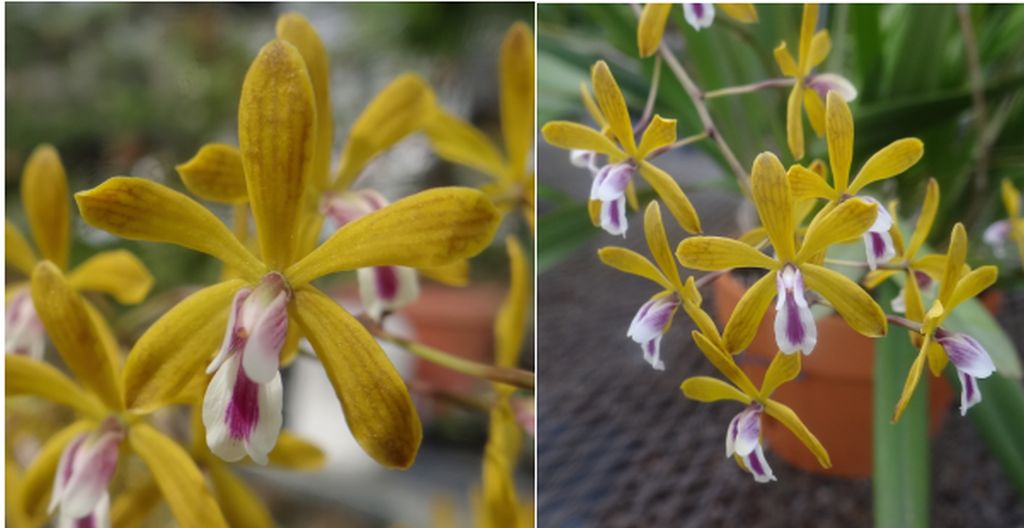

Encyclia richardiana Rodr.Seijo, Esperon & Sauleda 2017
Photos by © Darien Davila



Common Name Richard's Encyclia [A Richard whose epithet affine was nullified through no fault of his own 1800's whose epithet affine was nullified through no fault of his own - In Cuba The population of E. richardiana is called “labiata” because of the distinct lip]
Flower Size 1" [2.5 cm]
Found in Camaguey province of Cuba at elevations around 200 meters as a medium sized, sized, hot growing epiphyte with a short, stout, creeping to ascending rhizome enclosed by imbricating scarious sheaths giving rise to erect or ascending, clustered, ovate, attenuate towards apex pseudobulbs, the new growth always forms as plant produces flowers, basally enclosed by fugacious scarious sheaths and carrying 2 coriaceous to rigid, conduplicate, linear-lanceolate, acute leaves that blooms in the spring on a terminal, erect to arching, to 28" [70 cm], peduncles slender, distantly several-sheathed, paniculate above, with 10 lateral branches, to 6" [15 cm] long, to 45 flowered inflorescence with minute, ovate, acuminate, shorter than the pedicel floral bracts and carrying resupinate flowers.
Encyclia richardiana is similar to Encyclia fucata but differs both vegetatively and florally. Encyclia richardiana always has two leaves which are up to 12" [30 cm] long, E. fucata always has one leaf up to 8" [20 cm] long. The pseudobulbs of E. richardiana are ovate and attenuate towards apex, E. fucata has, as Lindley describes them pseudobulbs “nearly round, about the size of a large marble”. The midlobe of the labellum on E. richardiana is ovoid and sessile where in E. fucata the midlobe is obovate and is separated from the midlobe by a short isthmus. Encyclia richardiana has two long thin erect keels under column; E. fucata has two thick broad keels or as Lindley describes them "two oblong fleshy processes". In addition, in E. richardiana the sepals and petals are flat and obtuse, where in E. fucata Lindley describes the sepals as “acute….a little recurved at the margin, and incurved at the point.” He states that the petals are “rather smaller and thinner than the sepals, but very similar in form and color.” On the plate of the holotype of E. fucatum both the sepals and petals are incurved towards the apex. This feature is found on the plants of E. fucata in the Bahama Islands and Cuba. Finally, the column of E. fucata does not have any signs of auricles. Instead they have a very thin edge on the bottom of the column. Encyclia richardiana has small auricles and the edges of the column are thickened. These differences could indicate a different pollinator for E. richardiana." Rodr.Seijo, Esperon & Sauleda 2017
Synonyms Replaced name: Epidendrum affine A. Rich., . nom. illegit;
References W3 Tropicos, Kew Monocot list , IPNI ;
Historia Física Política y Natural de la Isla de Cuba, Botánica 11: 237. 1850 as Epidendrum affine;
* New World Orchid. Nomencl. Notes 28: 2 Rodr.Seijo, Esperon & Sauleda 2017 photos fide;
--------------------------------------------------------------------------------------------------------------------------
------------------------------------------------------------------------------------------------------